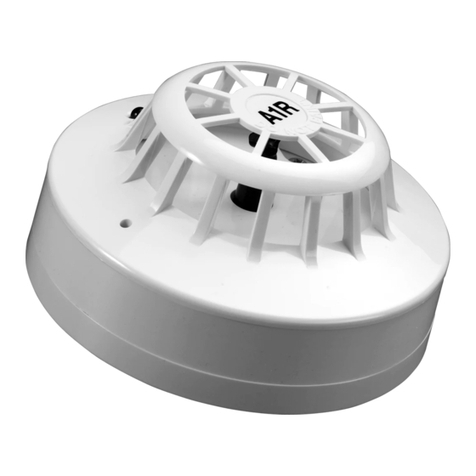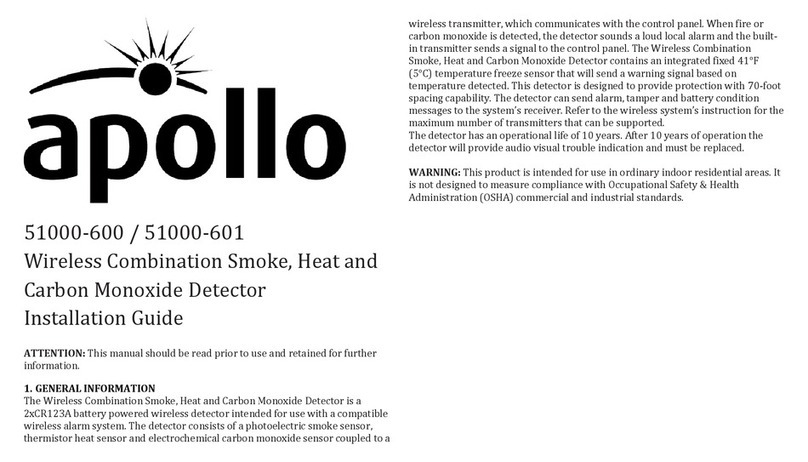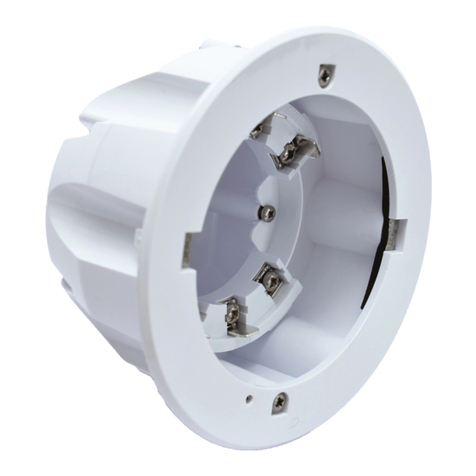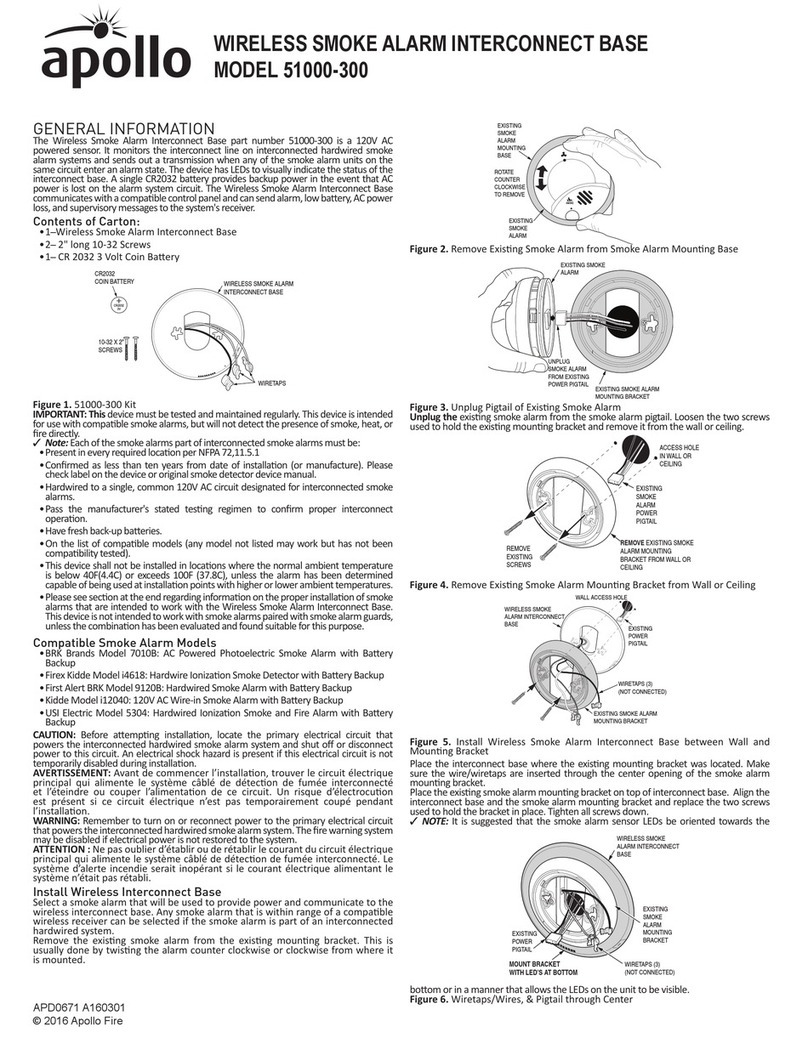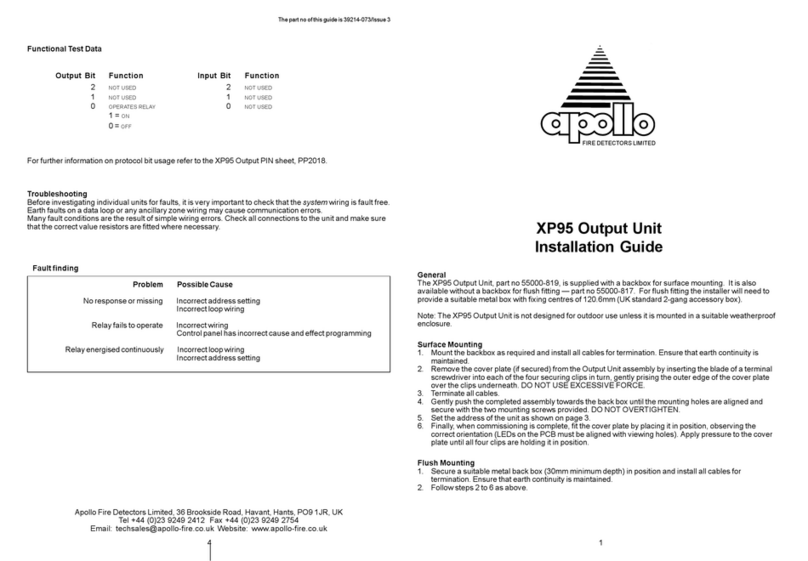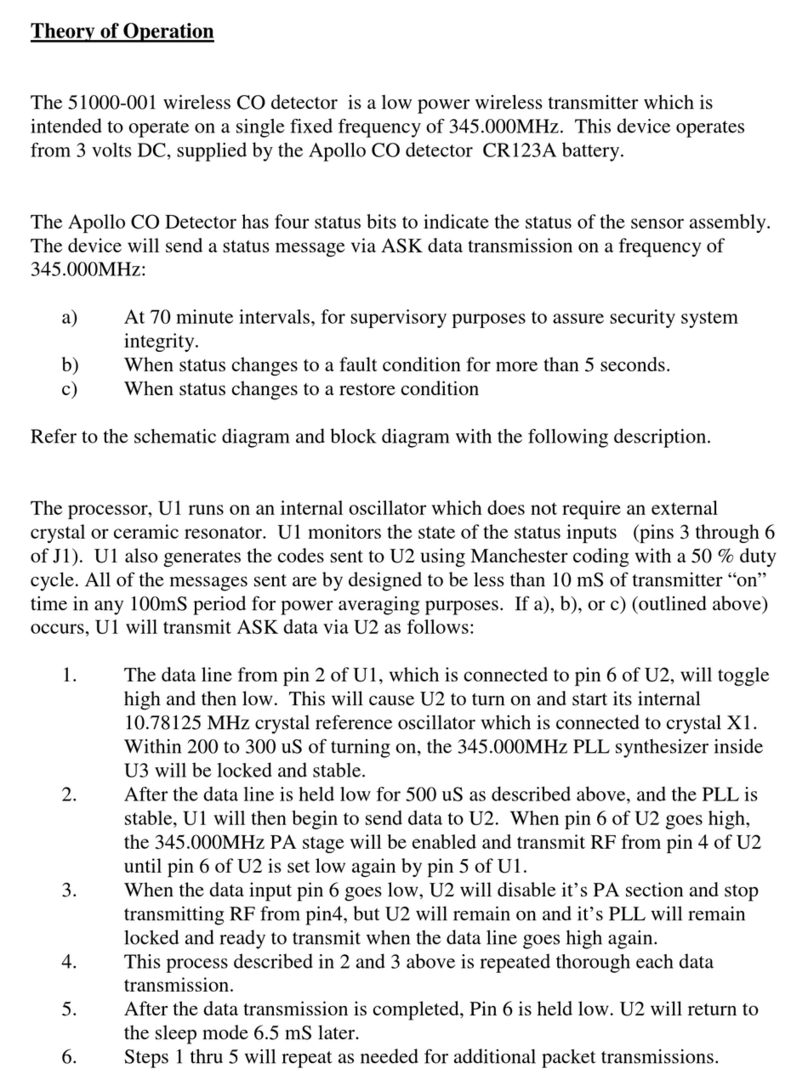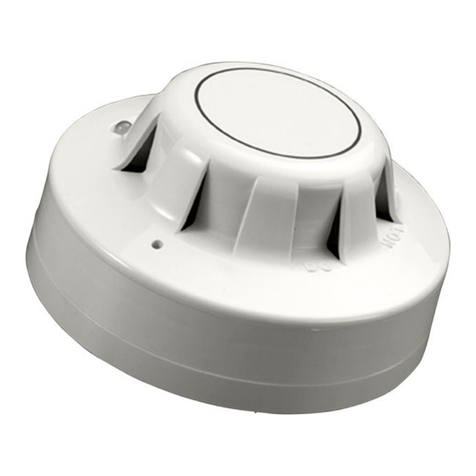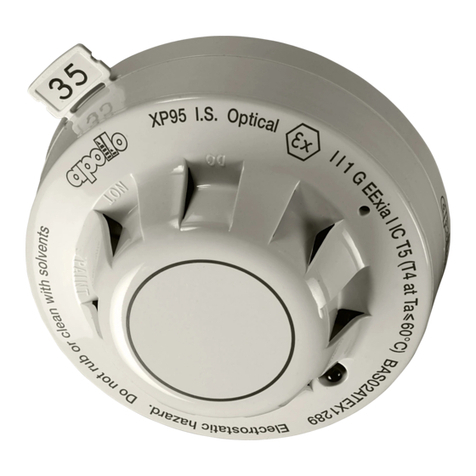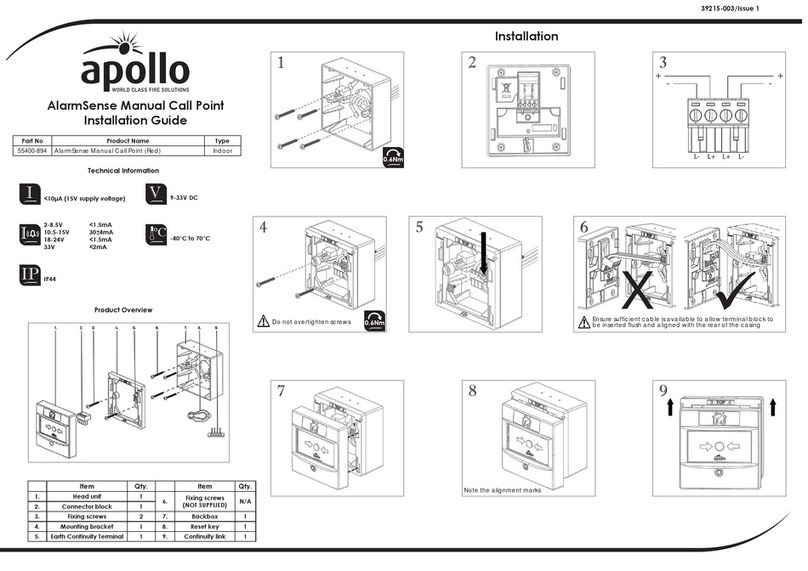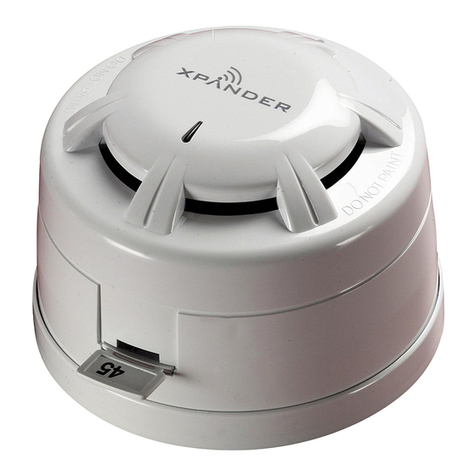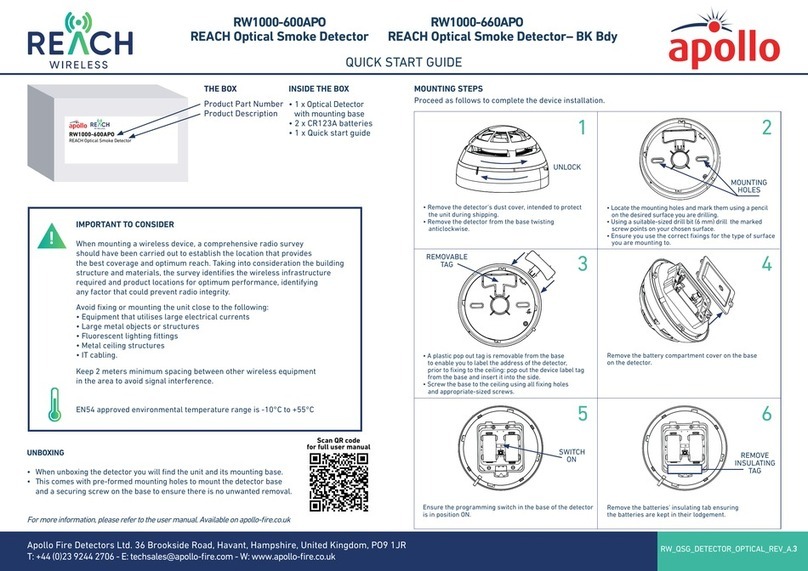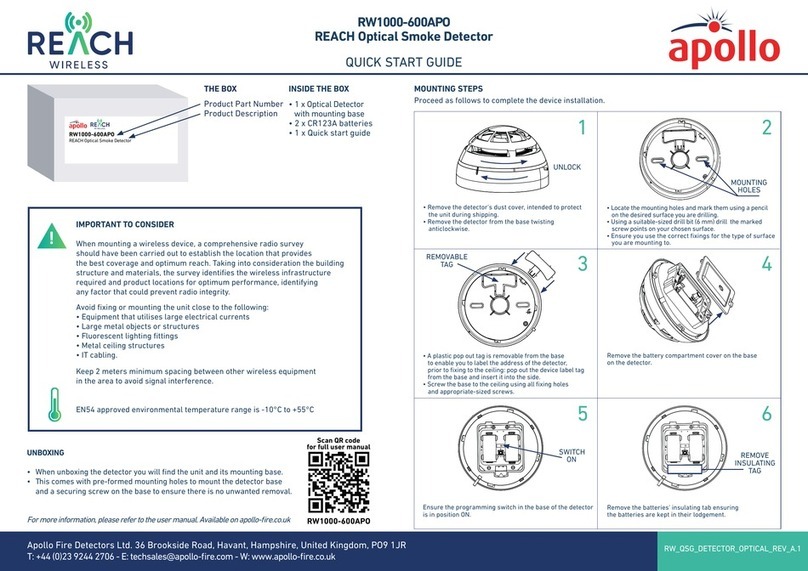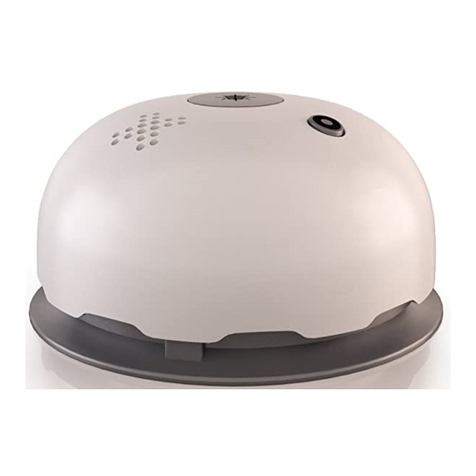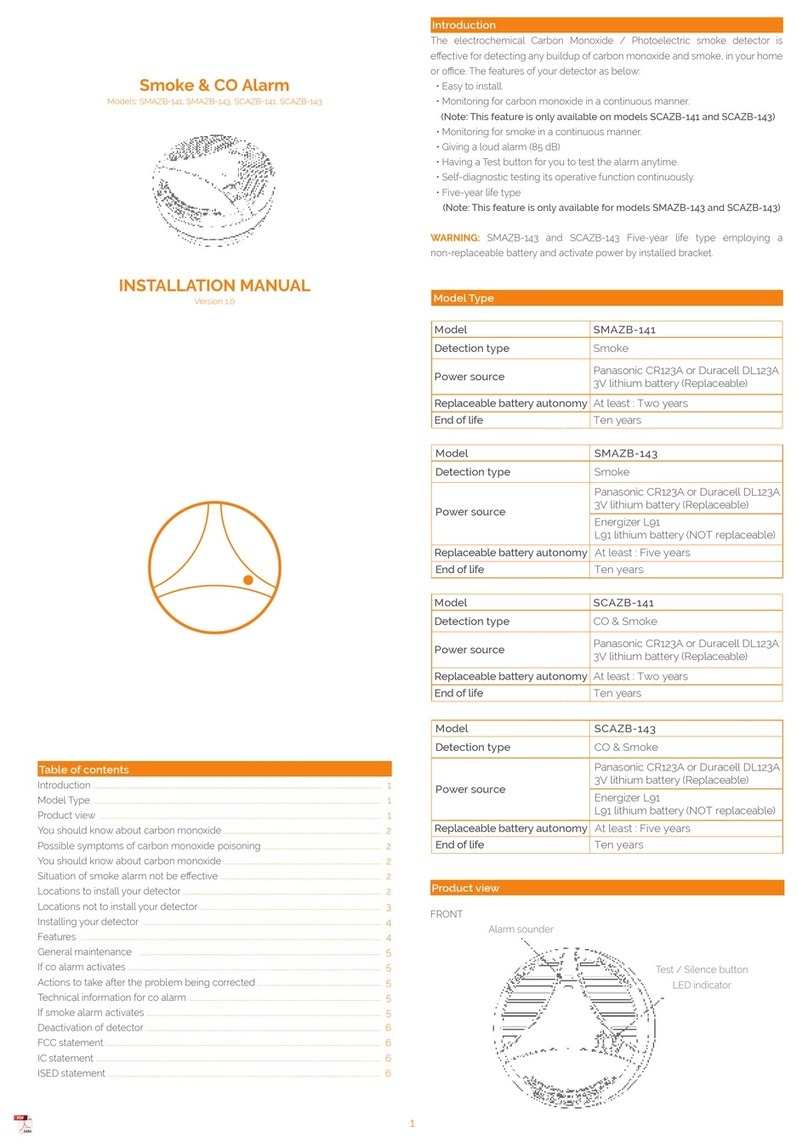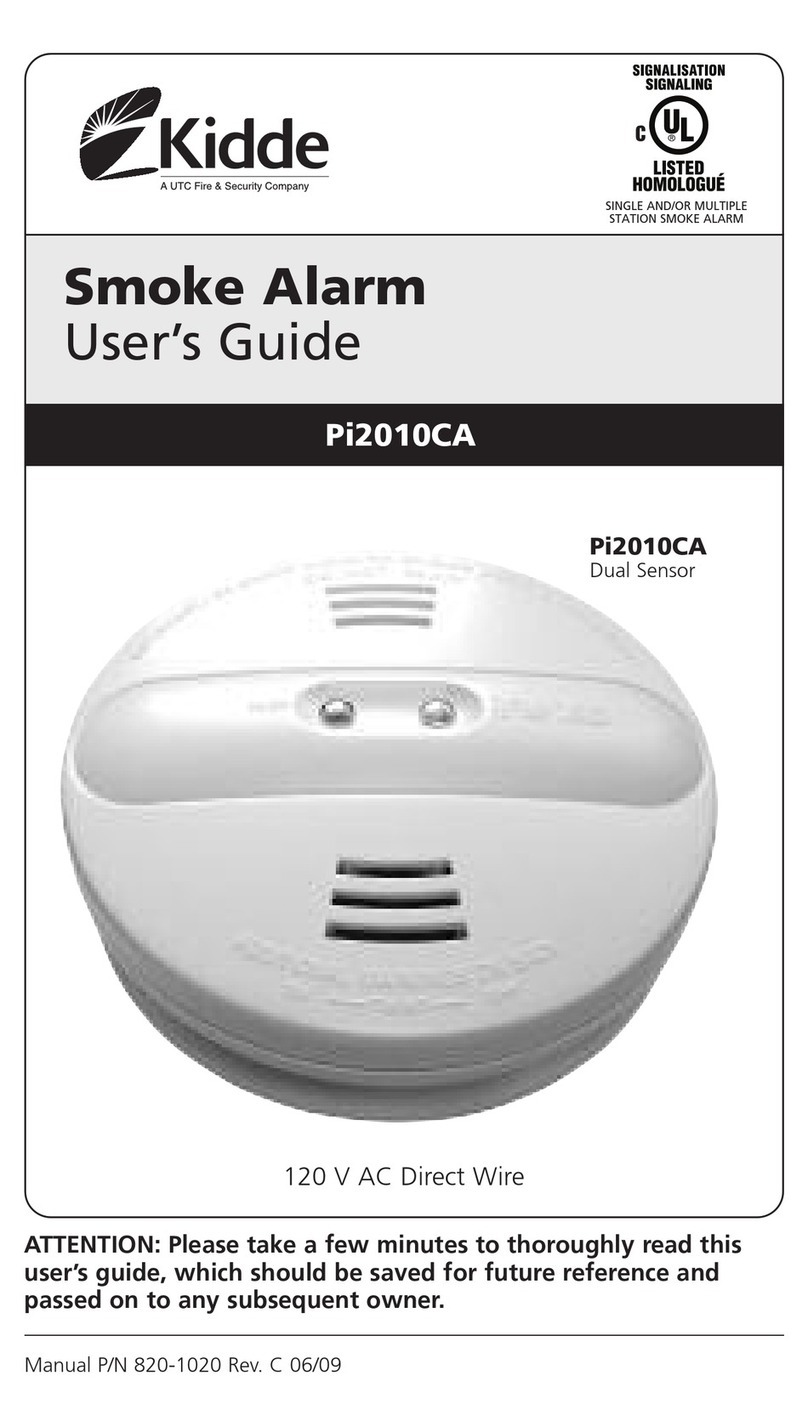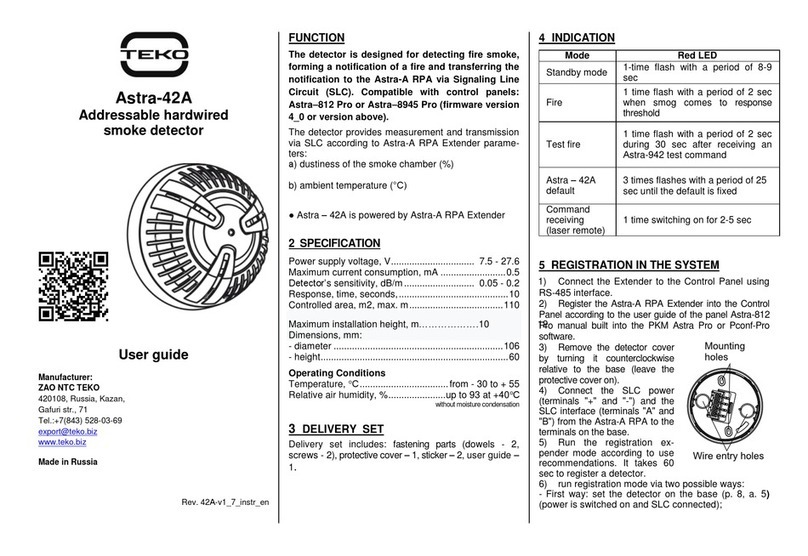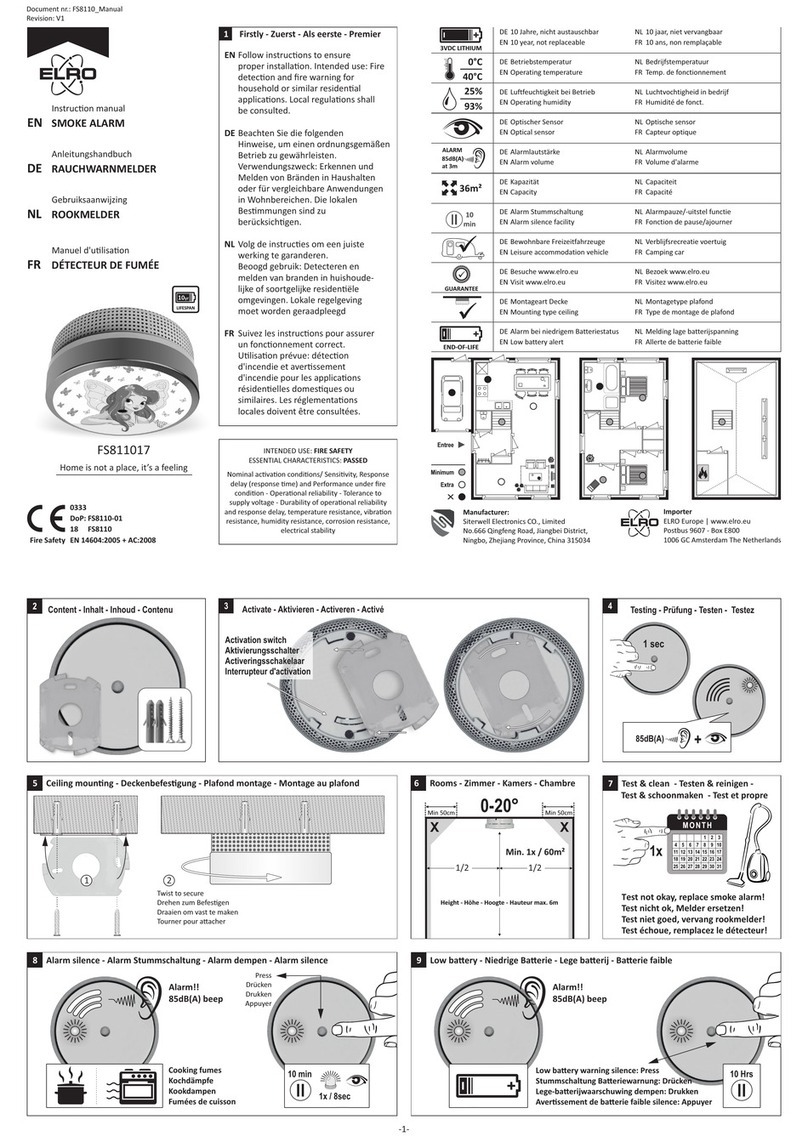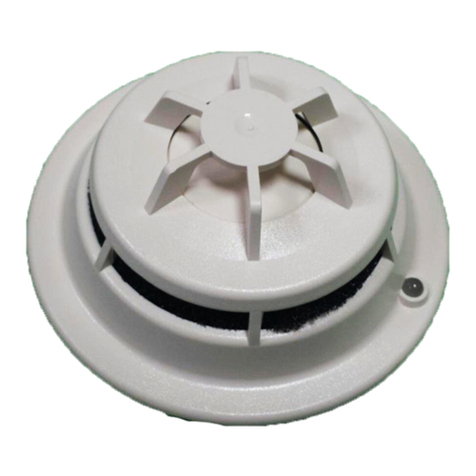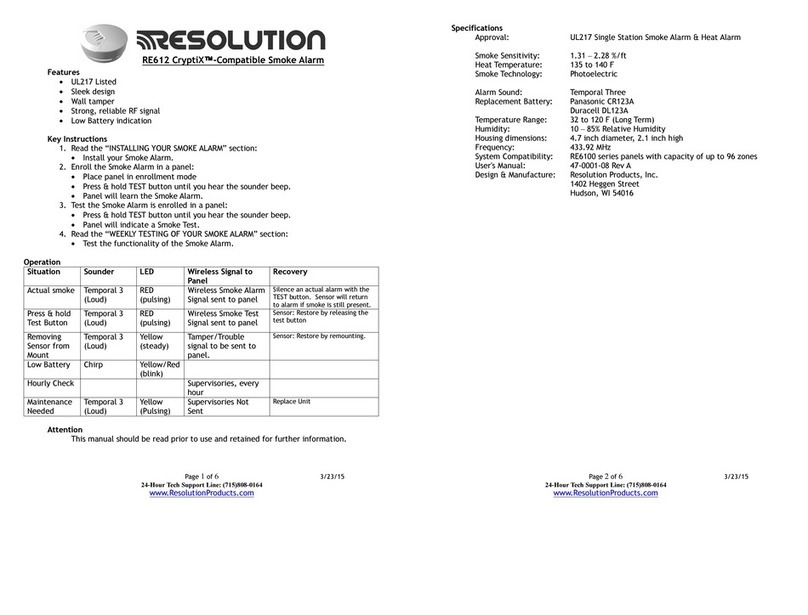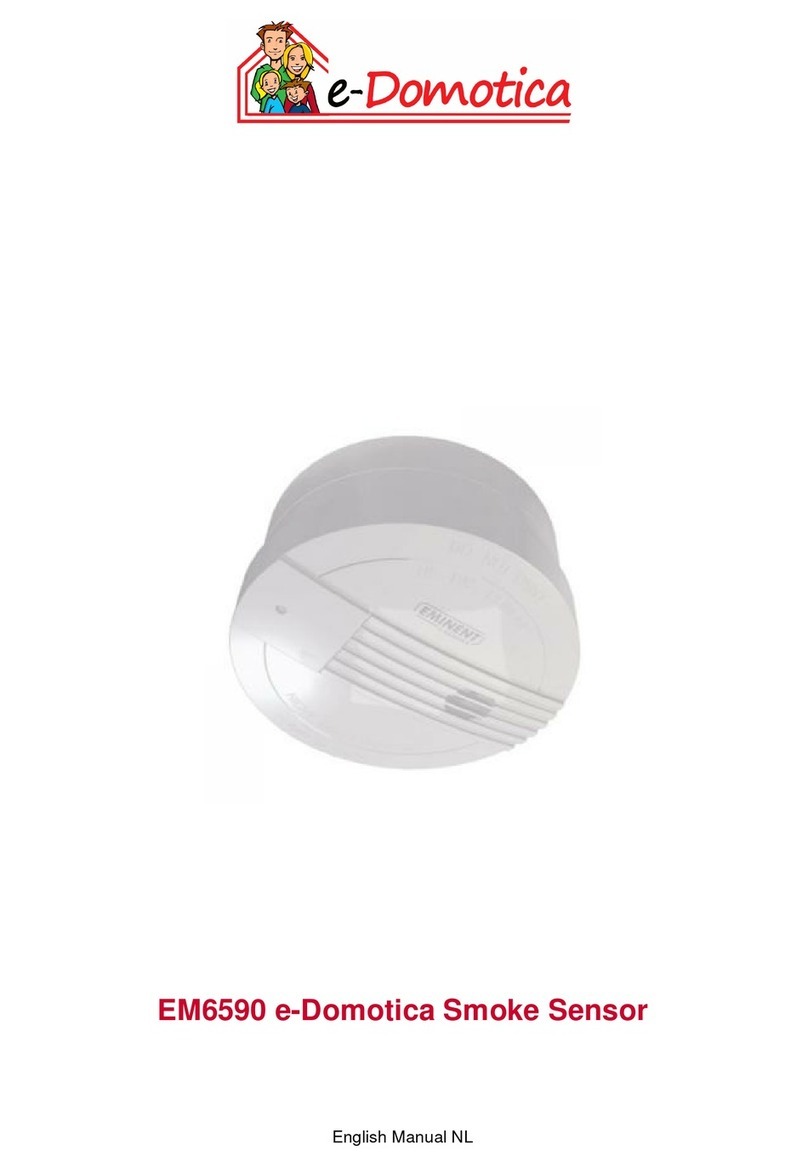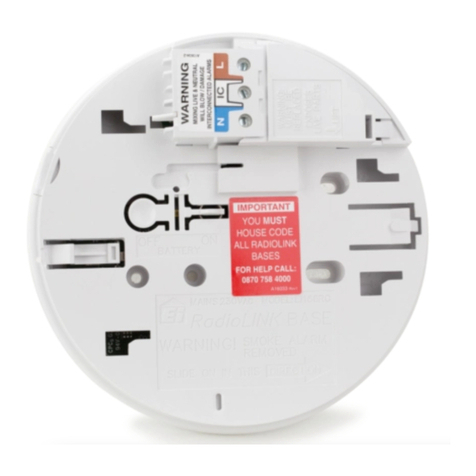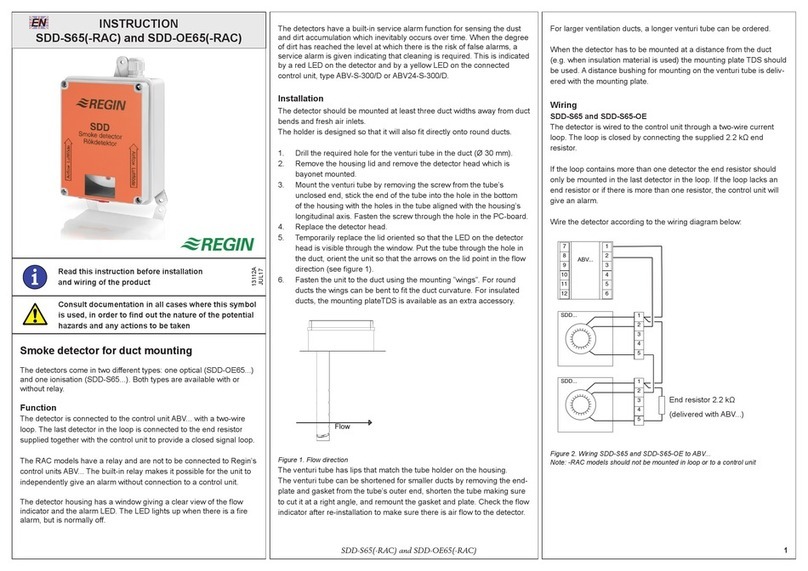
page
4
ADDRESSING AND COMMUNICATIONS
Each XP95 evice respon s to interrogation an comman
from central control equipment. It communicates to the
panel information on status, comman bits, type, location,
an other information that allows an alarm to be raise
even when the evice is not itself being interrogate .
Message error checking is also provi e . The evices are
compatible with Series 90, Discovery®an XPlorer systems
an control equipment to ai maintenance, extension an
upgra e of existing systems.
A unique, patente XPERT car provi es simple, user
frien ly an accurate i entification of etector location
whereby a co e car , inserte in the base, is rea by
any etector once it is plugge in. All the electronic
components are in the etector but the location information
is hel in the base. The a ress car simplifies an spee s
up installation an commissioning. A ressing errors
uring maintenance an service are eliminate .
The XP95 manual call point continues to use DIL switch
a ressing, but its interrupt feature also provi es automatic
reporting of its location in the interrupt mo e.
The XP95 etectors provi e an alarm facility that automatically
puts an alarm flag on the ata stream an reports its a ress
when the pre-set EN54 threshol s are excee e . The
evices provi e great flexibility in system esign with the
control equipment etermining the characteristics of the
system. A large an growing range of compatible control
equipment is available from many sources - etails are
inclu e in Apollo publication PP1010, which is available
on request.
APPLICATION OF XP95 DETECTORS
The choice of etector from the XP95 range follows the
well establishe principles of system esign. That is, the
optimum etector type will epen on the type of fire risk
an fire loa , an the type of environment in which the
etector is site .
For general use, smoke etectors are recommen e since
these give the highest level of protection. Smoke etectors
from the XP95 range may be ionisation, optical or
multisensor types. It is generally accepte that ionisation
types have a high sensitivity to flaming fires whereas
optical etectors have high sensitivity to smoul ering fires.
As a result of this, ionisation types are wi ely use for
property protection, an optical types for life protection.
These general principles still apply to XP95 etectors
although the availability of a multisensor in the range
offers more choice to the system esigner.
The multisensor is basically an optical smoke etector an
will therefore respon well to the smoke from smoul ering
fires. The etector also senses air temperature. This
temperature sensitivity allows the multisensor to give a
response to fast burning (flaming) fires, which is similar to
that of an ionisation etector. The multisensor can
therefore be use as an alternative to an ionisation etector
Where the environment is smoky or irty un er normal
con itions, a heat etector may be more appropriate. It
must be recognise , however, that any heat etector will
respon only when the fire is well establishe an
generating a high heat output.
Unless otherwise specifie , evices escribe in this gui e
are suitable for in oor use only.
